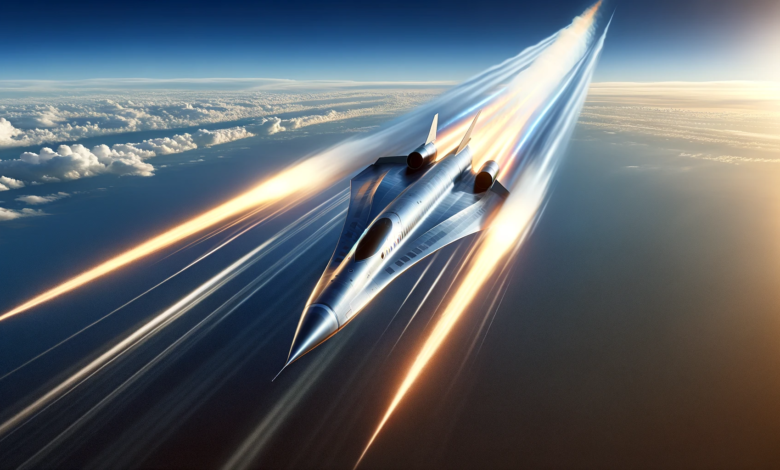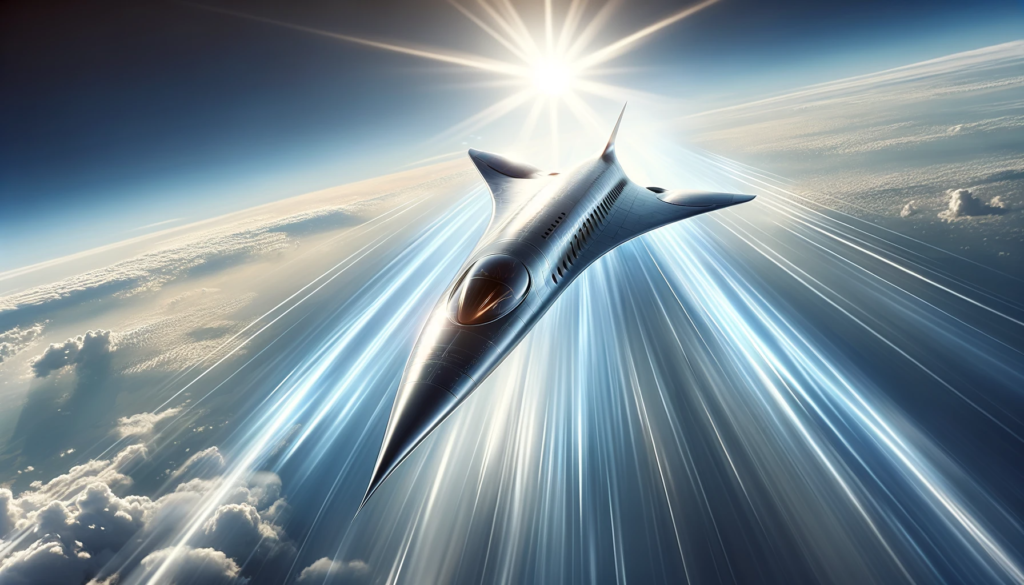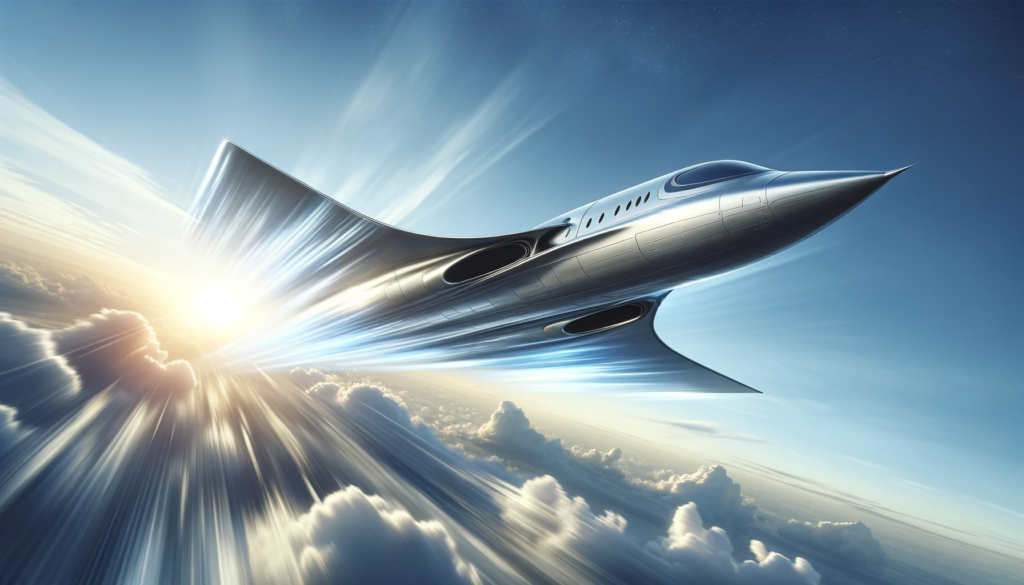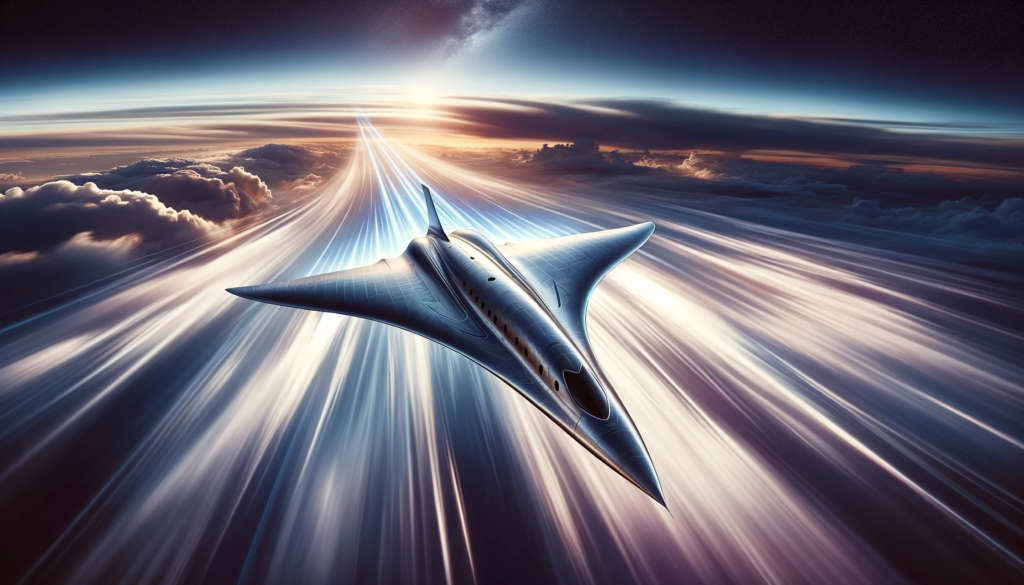
“Hypersonic flight The realm of aviation has always been a testament to human ingenuity and the relentless pursuit of faster, more efficient, and boundary-pushing technology. At the forefront of this quest is the development of hypersonic jets, aircraft capable of traveling at speeds exceeding Mach 5, or five times the speed of sound. This blog explores the exhilarating world of hypersonic flight, its technological innovations, potential applications, and the challenges it faces.
What Are “Hypersonic flight?
Hypersonic jets are aircraft designed to travel at speeds much greater than supersonic jets, which fly faster than the speed of sound (Mach 1). Hypersonic speeds refer to those above Mach 5, pushing the boundaries of current aeronautical engineering. These speeds propel aircraft into a regime where traditional aerodynamics shift dramatically, requiring innovative design and materials.

Key Characteristics
- Speed and Altitude: Hypersonic jets can reach speeds over 6,000 kilometers per hour and typically operate at altitudes above 30,000 meters.
- Design: Sleek, streamlined bodies with minimal drag and heat-resistant materials are essential.
- Propulsion: These jets often utilize scramjet (supersonic combustion ramjet) engines, which are capable of operating efficiently at hypersonic speeds.
Technological Innovations in Hypersonic Flight
Scramjet Technology
A scramjet engine is a key innovation in hypersonic technology. Unlike traditional jet engines, scramjets do not have moving parts and rely on the high speed of the aircraft to compress incoming air for combustion. This makes them lighter and simpler, ideal for hypersonic speeds.
Heat Resistance
Traveling at hypersonic speeds generates extreme temperatures, requiring innovative materials. Recent developments include heat-resistant alloys and ceramics capable of withstanding temperatures exceeding 2,000 degrees Celsius.
Aerodynamic Design
Hypersonic aircraft feature unique aerodynamic designs to handle both high speeds and thermal stress. These include sharp edges, flat surfaces, and specialized control surfaces.
Potential Applications
1. Military Applications
- Strategic Missiles: Hypersonic missiles can travel at exceptional speeds, making them nearly impossible to intercept with current defense systems. This capability could significantly alter military strategies and global security dynamics.
- Reconnaissance Aircraft: Hypersonic aircraft could perform rapid reconnaissance missions, gathering critical data from hostile territories without being easily detected or intercepted.
2. Space Exploration
- Easier Access to Space: Hypersonic technology could make launching satellites and spacecraft more efficient and cost-effective, potentially revolutionizing the space industry.
- Space Tourism: As a gateway to space, hypersonic vehicles might make suborbital space tourism more accessible to the public.
3. Commercial Aviation
- Ultra-Fast Passenger Travel: Hypersonic jets could drastically reduce flight times across the globe, turning long-haul flights into short trips and revolutionizing international travel and business.
- Cargo Transport: High-speed hypersonic transport could also be used for rapid global delivery of goods, especially time-sensitive or high-value items.
4. Emergency Response
- Rapid Deployment: Hypersonic vehicles could be used for incredibly fast deployment of emergency aid and personnel to disaster-stricken areas, potentially saving more lives by reducing response times.

5. Scientific Research
- Atmospheric Studies: Flying at hypersonic speeds at high altitudes could provide new opportunities for atmospheric science, including climate and weather research.
- Aerodynamic Testing: The development of hypersonic technology itself drives advancements in aerodynamics, materials science, and propulsion systems.
6. Global Security
- Surveillance and Monitoring: Hypersonic drones or aircraft could be used for extensive and rapid surveillance, playing a crucial role in global monitoring and intelligence gathering.
7. Industrial Applications
- High-Speed Testing: Hypersonic wind tunnels and flight tests can aid in the development of various industrial materials and systems, pushing the boundaries of what’s possible in other engineering fields.
8. Telecommunications
- Rapid Deployment of Satellites: Hypersonic vehicles could be used to deploy telecommunications satellites faster and more efficiently, enhancing global communication networks.
9. Education and Training
- Advanced Aerospace Education: The development and operation of hypersonic aircraft offer unique educational and training opportunities in aerospace engineering and related fields.
10. Technological Catalyst
- Spurring Innovation: The challenges posed by hypersonic flight encourage innovation in many areas, including computing, materials science, and fuel efficiency, potentially leading to breakthroughs applicable in other industries.
Hypersonic technology, with its blend of speed, efficiency, and versatility, has the potential to make significant impacts across a wide range of sectors, from defense to space exploration and beyond.
Challenges Ahead
Environmental Impact
The environmental impact of hypersonic flight is a significant concern. The high levels of fuel consumption and emissions at these altitudes could have unforeseen effects on the atmosphere.
Technical Hurdles
Developing materials and engines capable of withstanding extreme conditions remains a formidable challenge. Additionally, ensuring passenger safety at such high speeds and altitudes is a paramount concern.
Economic Viability
The cost of developing and operating hypersonic aircraft is currently prohibitive for widespread use. Reducing these costs is crucial for the technology to become commercially viable.

Hypersonic jets represent the cutting edge of aerospace technology, offering unparalleled speed and efficiency. While they hold immense promise for military, space, and commercial applications, significant challenges in design, safety, and environmental impact remain. The journey to regular hypersonic travel will be a marathon, not a sprint, but it is a journey that could redefine our concept of distance and time in the decades to come.




